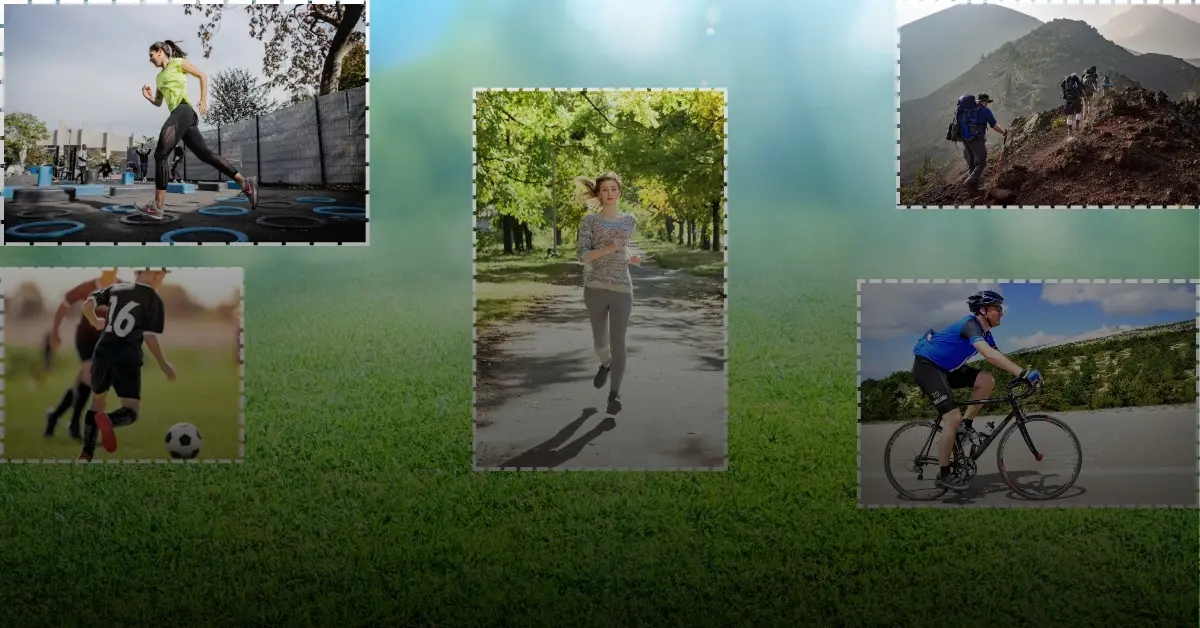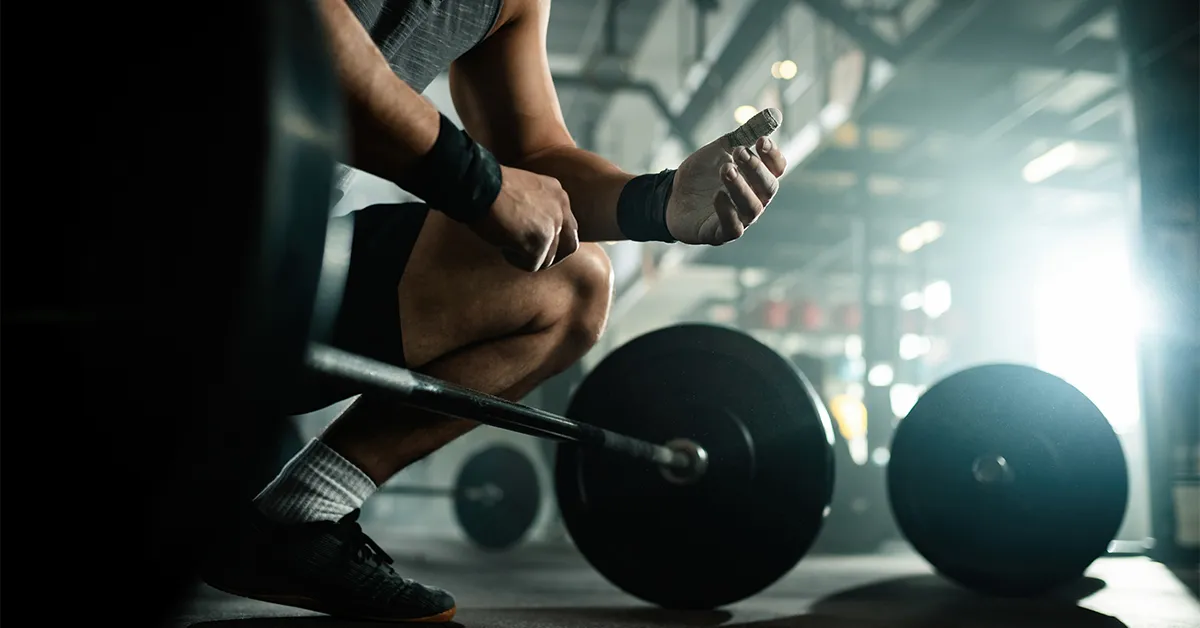Imagine standing at the crossroads of transformation, where a single movement holds the power to redefine the contours of your lower body while sculpting your muscles into artwork.
Enter the split squat, an unassuming titan in the world of fitness with its ability to carve out elite athleticism from the ground up.
This isn’t just an exercise; it’s a ritual that tests the limits of your balance, endurance, and sheer willpower, promising not just stronger legs, but a foundation of iron upon which the temple of your body rests.
So What Are Split Squats?
Despite its simplicity, the split squat is a powerhouse of an exercise that targets the quadriceps, hamstrings, glutes, and calves while also engaging the core for stability. It’s a fundamental movement that challenges your balance, strength, and endurance.
As a go-to exercise for unilateral strength, it trains one side of your body at a time, leading to improved balance and symmetry. Being adaptable for all fitness levels, it also provides a versatile addition to any workout regimen.
Why Split Squat Is The Most Underrated Exercise Ever
It’s baffling how split squats don’t always get the spotlight they deserve.
Often overshadowed by their more popular counterparts like squats and lunges, the underrated status of split squats comes from its deceptive simplicity; however, when executed correctly, it offers profound benefits.
From correcting imbalances to improving coordination, its unilateral nature makes it an essential exercise for everyone from young athletes to seniors seeking gentle strength training.
Incorporating split squats into your routine can bridge the gap between basic fitness and peak performance, addressing common concerns such as muscle asymmetry and mobility limitations.
Benefits About Why You Should Be Doing Split Squats
Split squats are not just another item on your workout checklist; they’re a crucial move towards a fitter, more balanced you. Here’s why they should be a non-negotiable part of your fitness regime:

- Greater Core Stability & Balance: Engaging your core to keep your balance during split squats strengthens your abdominal and lower back muscles, translating to better posture and reduced risk of injuries.
- Improved Muscular Symmetry: By working one leg at a time, they make both sides of your body equally strong, addressing any existing muscular imbalances.
- Increased Flexibility & Range of Motion: Regularly performing split squats can increase your hip flexor flexibility, benefiting your overall mobility.
- Fat Burning: By engaging multiple muscle groups, they increase calorie burn and promote muscle growth, which is essential for boosting metabolism and shedding unwanted fat.
- Strengthened Joints: For age-specific groups, such as seniors, split squats can fortify joint health, reducing the risk of injuries and maintaining independence.
- For Every Level: Whether you’re just starting out, recovering from an injury, or looking to intensify your workouts, split squats can be modified to fit your needs, making them a versatile exercise for everyone
What Muscles Do Split Squats Work and Impact?
The beauty of split squats lies in their adaptability; by adjusting your stance or adding weights, you can increase the intensity and muscle engagement, making it a dynamic exercise suitable for all fitness levels.
Do Split Squats Actually Build Muscle?
Yes, split squats are incredibly effective in building muscle. By isolating each leg, they ensure balanced muscle growth and improve unilateral strength. The primary muscles targeted include the quadriceps and glutes, which bear the brunt of the workload. Additionally, the hamstrings and core muscles are engaged to stabilize the body throughout the movement.
What Does A Split Squat Work?
Split squats engage a variety of muscle groups, each playing a critical role in the execution of the movement. Here’s a closer look at how each targeted muscle gets activated during the exercise:
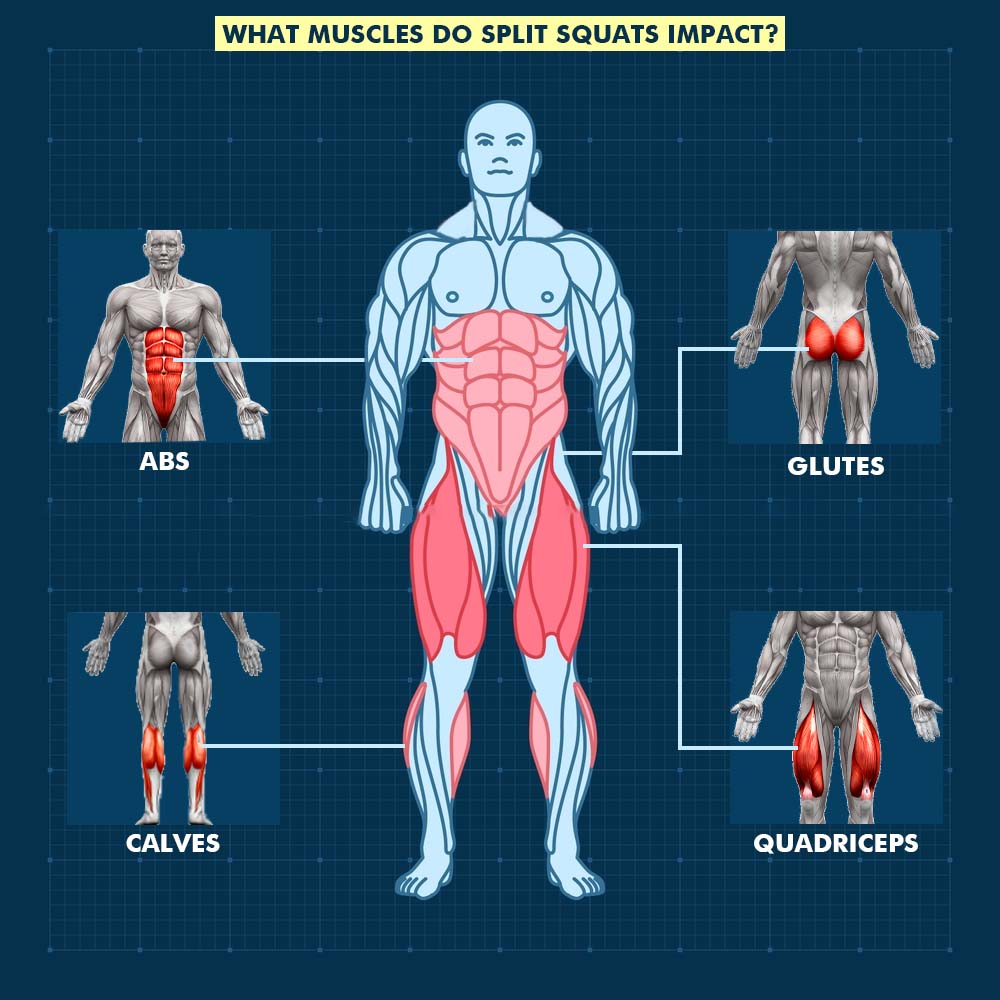
Do Split Squats Grow Quadriceps?
During the upward phase of a split squat, the quadriceps contract to straighten the knee, bearing the majority of the body’s weight and the added load if weights are used.
Do Squats Build Glutes?
When you rise from the bottom of a split squat, your glutes power the upward motion, driving the hips forward. This action not only works the glutes intensively but also ensures stability in the pelvis and lower back.
Do Split Squats Work Abs?
The abdominal muscles, along with the muscles of the lower back, contract to stabilize the torso, preventing unwanted movements. Therefore your whole core is engaged throughout the split squat to maintain balance.
Do Split Squats Hit Calves?
While the calves may not be the primary focus of split squats, they are actively engaged in stabilizing the ankle and supporting the body’s balance. The gastrocnemius and soleus muscles work to maintain a stable base, especially during the lower phase of the movement when balance is most challenged.
Do Split Squats Increase Testosterone?
While split squats primarily focus on muscle engagement and strengthening, their role in increasing testosterone levels is a topic of interest.
Engaging in intense resistance training, especially in compound movements, has been shown to stimulate the production of testosterone. The effect is particularly noted in exercises that involve large muscle groups and require significant effort, which applies to split squats.

By incorporating them into your workout, you not only benefit from the direct muscle-building effects but also potentially enjoy a hormonal boost that can further enhance muscle synthesis, recovery, and overall athletic performance.
However, it’s important to remember that lifestyle, nutrition, and overall health play significant roles in hormone regulation.
Learning How To Do Split Squats
Learning to perform a split squat correctly can significantly impact your fitness journey. Achieving the correct stance and form in a split squat is crucial for maximizing your workout gains while minimizing the risk of injury.
Getting Started: Equipment and Setup
At its core, all you need is your body weight and a stable surface to rest your feet.
However, for those looking to intensify the workout, holding dumbbells or kettlebells at your sides, or placing a barbell across your shoulders, can add an extra challenge.
For those focusing on stability and rehabilitation, using a chair, a resistance band, or a wall for support can also help in maintaining proper form and safety.
The Anatomy of a Perfect Split Squat
The Perfect Split Squat Form
The foundation of a successful split squat begins with your stance. Start by stepping one foot forward and the other back, roughly two feet apart. Ensure your front foot is flat on the ground, and your back heel is lifted.
A Step-By-Step Guide To Split Squat
- Start Position: Begin by standing upright with your feet hip-width apart. Take a step back with one foot, placing the ball of that foot on the ground. Your stance should be wide enough to maintain balance but not so wide that it causes discomfort.
- Lowering Phase: Slowly bend both knees, lowering your body until your front thigh is parallel to the floor. Ensure your front knee does not extend past your toes to maintain proper alignment and prevent injury. Your back knee should hover just above the ground, creating a 90-degree angle at both knees.
- Engagement: Focus on engaging your core throughout the movement for added stability. Your torso should remain upright, and your gaze forward, ensuring that your posture is straight and controlled.
- Rising Phase: Drive through the heel of your front foot, extending both knees to return to the starting position. Keep the movement smooth and controlled, engaging your glutes and quads to lift your body.
- Repetition and Switch: Perform the desired number of repetitions on one side before switching legs. Ensure equal training on both legs to promote symmetrical strength development.
Trainer Tips for Perfecting Your Form
Depth Matters:
How deep should split squats be? Aim for a depth where your front thigh is parallel to the floor, ensuring your front knee doesn’t extend past your toes. This depth maximizes muscle engagement while keeping the exercise safe.
How Many Reps For Split Squats?
The ideal number of reps for split squats can vary based on your fitness goals. For strength, aim for 4-6 reps with heavier weights. For endurance and toning, 12-15 reps with lighter weights or just bodyweight are effective.
How To Get Better At Split Squats?
To advance in your split squat performance, it’s vital to focus on technique refinement, targeted muscle strengthening, and balance.
How to Determine Proper Weight for Split Squat
Start with body weight to perfect your technique, then gradually introduce additional weights. For those new to adding weights, dumbbells held at your sides offer a balanced way to increase resistance.
The key is to select a weight that challenges you in the last 2-3 reps of a set without compromising your form. Listen to your body’s feedback; if you can complete your sets without significant strain, it’s time to increase the weight.
Conversely, if your form suffers, reduce the weight until you can perform the exercise correctly.
Quad Focus Vs. Glute Focus
Split squats can be adjusted to target either the quadriceps or glutes more directly, depending on your stance and movement focus:
For Quad Focus: Maintain a more upright torso and narrow your stance, ensure your front knee moves slightly forward over your toes during the descent.
For Glute Focus: Conversely, to shift the focus to your glutes, adopt a longer stance and lean your torso slightly forward, pushing your hips back as you lower down.
How Do You Fix A Weak Split Squat?
A weak split squat can be a sign of imbalances or deficiencies in strength, flexibility, or technique. To fortify your split squat, begin by
- Focus on Form
- Balance Drills
- Strengthen Supporting Muscles
- Build Core Strength
- Progressive Overload
- Work on Flexibility
- Mind-Muscle Connection
- Consistent Practice
What Are the Split Squat Variations?
Exploring split squat variations is essential for anyone looking to diversify their workout routine and challenge their body in new ways. These variations can help you target different muscle groups, improve balance and stability, and overcome workout plateaus.
TRX/Suspension Split Squat
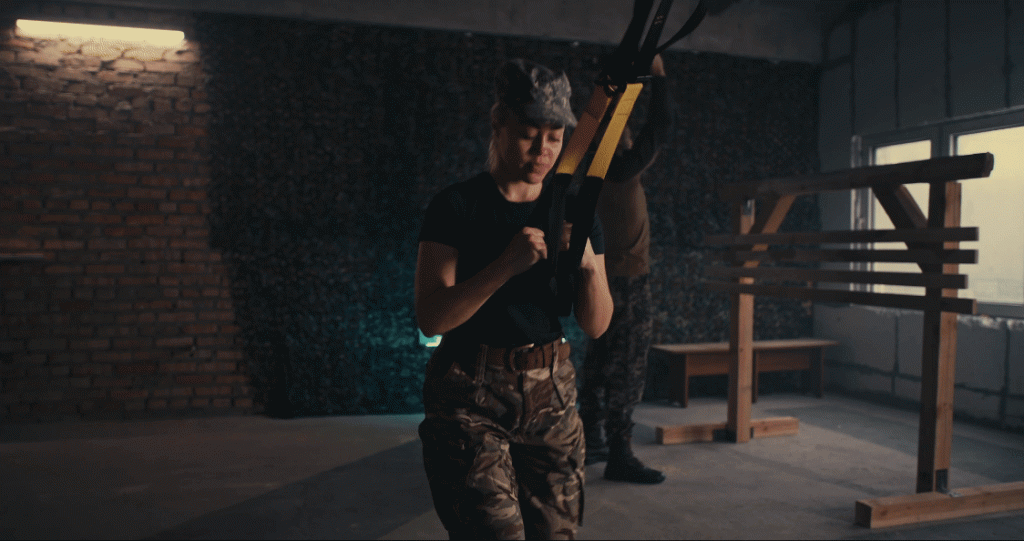
What It Is: This variation uses TRX or suspension straps for added instability, forcing your muscles to work harder to maintain balance.
Benefits:
- Enhances core stability and balance
- Increases muscle engagement and recruitment
- Ideal for rehabilitation and those focusing on functional fitness
Front Foot Elevated Split Squat
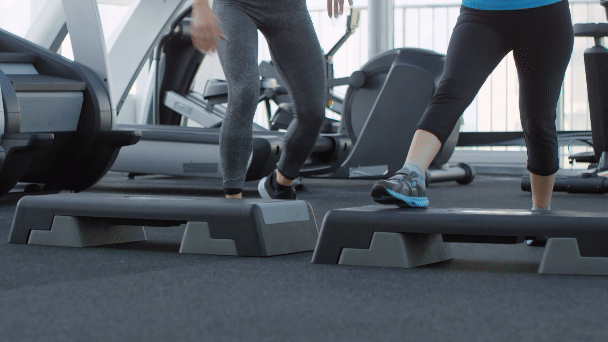
What It Is: Performed with the front foot elevated on a platform, increasing the range of motion.
Benefits:
- Targets the quadriceps more intensely
- Improves flexibility and mobility in the hips
- Aids in correcting imbalances between legs
Rear Foot Elevated Split Squat / Bulgarian Split Squat

What It Is: This involves elevating the rear foot on a bench or platform, shifting more weight onto the front leg.
Benefits:
- Amplifies focus on the glutes and hamstrings of the front leg
- Develops balance and proprioception
- Excellent for building unilateral strength and addressing imbalances
Both Feet Elevated Split Squat
What It Is: Both feet are elevated on separate platforms, requiring significant balance and control.
Benefits:
- Encourages equal strength development in both legs
- Increases the stability and balance challenge
- Great for advanced athletes looking to push their limits
Split Squat Workout Routine / Programme Design Considerations
Designing a split squat-focused workout routine requires careful consideration of various factors, including exercise progression, volume, intensity, and recovery. Our goal is to get the maximum gains out of each workout while minimizing the risk of overtraining or injury.
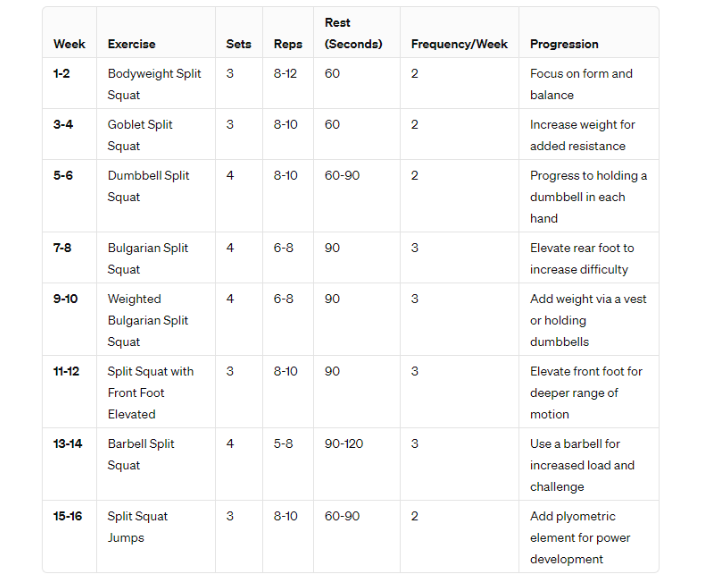
Additional Guidance:This routine is designed to be part of a comprehensive training program. Incorporate upper body, core, and flexibility work on alternate days to ensure a well-rounded fitness regimen.
Most Frequent Mistakes To Avoid While Doing Your Split Squats
Split squats, though are integral for lower body development, can be a double-edged sword if not performed correctly. Even seasoned athletes encounter stumbling blocks that can hinder progress and may lead to frustration.
Why Can't You Do A Split Squat?
Struggling with split squats is more common than you might think, and it’s often not just a matter of effort or strength. Here are some reasons why:
- Lack of Mobility: Without adequate hip, ankle, and thoracic spine mobility, maintaining proper form becomes challenging, leading to ineffective execution or potential injury.
- Poor Balance and Coordination: If you’re finding split squats difficult, it might be due to inadequate core strength or a lack of proprioceptive ability, which is your body’s capacity to sense its position in space.
- Muscular Imbalances: If one side of your body is weaker than the other, it can lead to compensation with the stronger side, preventing the weaker side from catching up.
- Incorrect Form: Many individuals struggle because they are not performing the exercise correctly, such as not aligning the knee with the toe, allowing the front knee to extend past the toes, and failing to keep the torso upright.
Common Pitfalls and How to Avoid Them

Inadequate Warm-Up
Skipping a proper warm-up is like setting out on a journey without a map. Your body needs to prepare for the physical demands ahead to perform optimally and reduce the risk of injury.
How To Correct It: Taking the time to warm up properly ensures your body is ready to tackle split squats with vigor, safeguarding against strains and sprains.
Improper Foot Placement
One of the most critical aspects of performing split squats effectively is foot placement. Incorrect positioning can lead to reduced stability, inefficient muscle activation and an increased risk of injury.
How To Correct It: Finding the right stance is key to engaging the correct muscles without straining the joints. Experiment with slight adjustments in foot placement to discover what works best for your body’s mechanics and flexibility levels.
Ignoring Core Engagement
Neglecting core engagement is a common oversight that can compromise stability and form during split squats.
How To Correct It: Activating your core throughout the exercise helps maintain an upright posture and prevents the torso from leaning too far forward or backward.
Rushing Through Repetitions
Quality trumps quantity when it comes to split squats. Rushing through the exercise not only compromises form, but also reduces the effectiveness of the workout along with increasing the likelihood of injury.
How To Correct It: Focus on maintaining control and moving through each repetition with intention. Slowing down allows for proper muscle activation
What Is A Good Weight For Split Squats?
Determining the ideal weight for split squats can seem like a puzzle. The answer isn’t one size fits all; it varies based on fitness level, goals, and experience. The key is to listen to your body and adjust the weight accordingly, focusing on technique before adding more resistance.
Are Heavy Split Squats Good?
Heavy split squats can be incredibly beneficial for building strength, improving muscular endurance, and stability. Incorporating weights enables progressive overload, which is crucial for continuous strength and muscle development.
However, “heavy” is relative and should align with your ability to maintain correct posture and complete your desired number of repetitions without compromising form.
Bodyweight Vs Loaded Comparison Chart
Choosing between bodyweight and loaded split squats depends on your current fitness level, goals, and the specific challenges you’re looking to overcome. Here’s a brief comparison:

Weight Options
Split squats can be performed with various equipment, each offering unique benefits:
1.Dumbbell Split Squat:

Ideal for beginners and those focusing on balance and symmetry. Dumbbells allow for a natural hand position, reducing wrist strain and improving muscle engagement across the body.
2.Barbell Split Squat:
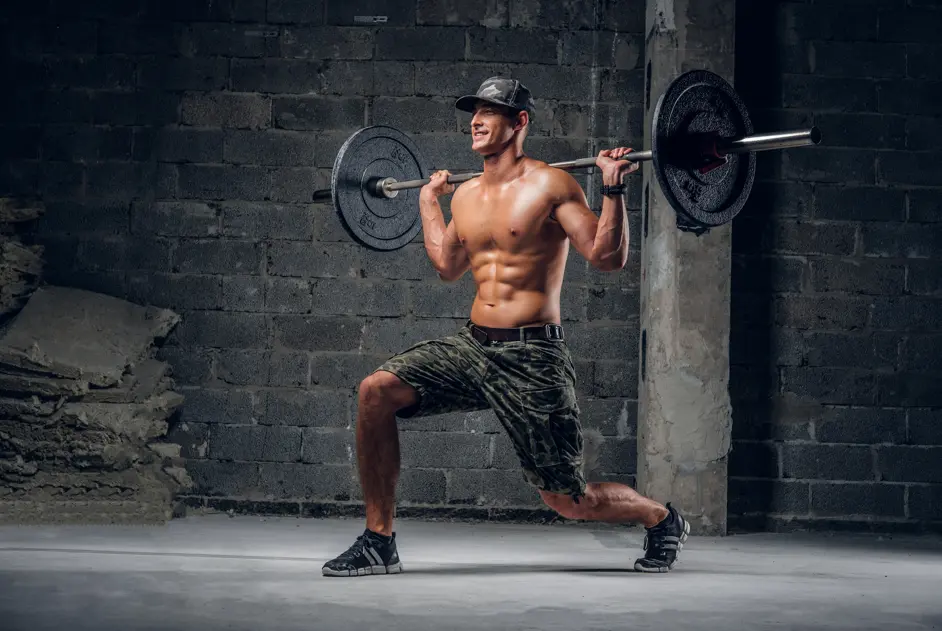
Suitable for more advanced individuals seeking to increase the weight significantly. It requires good core strength and balance to maintain proper posture throughout the exercise.
3.SSB Split Squat (Safety Squat Bar Split Squat):
The SSB’s design helps distribute weight more evenly across the shoulders, reducing neck and shoulder strain. It’s excellent for those with limited shoulder mobility
4.Goblet Split Squat:
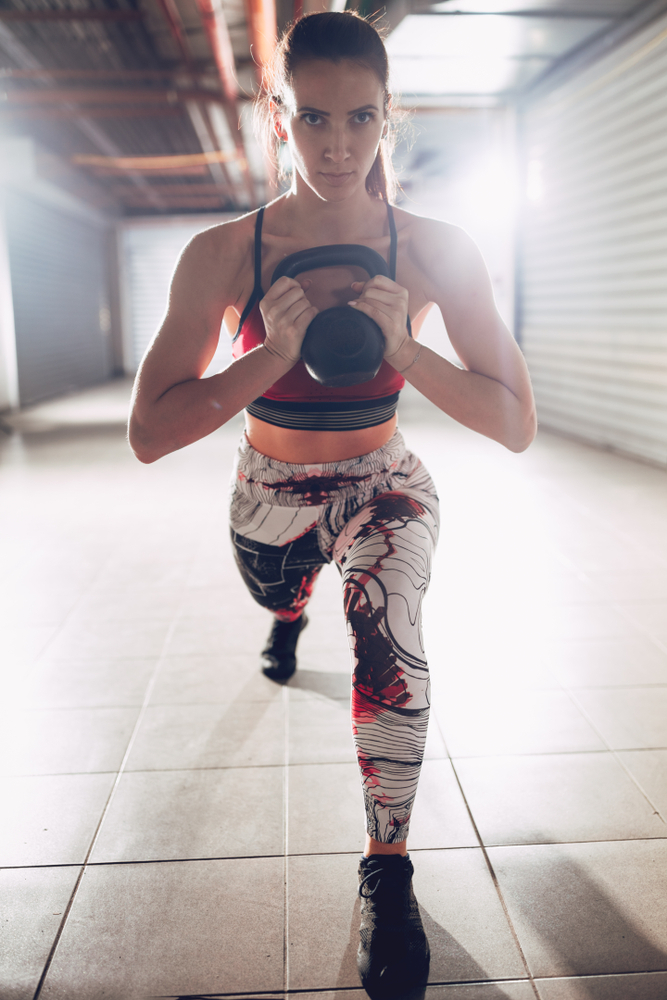
Perfect for those focusing on core stability and upright posture. The front-loaded position of the weight helps keep the back straight and engages the core throughout the movement.
What Pairs With Split Squats?
Split squats are a versatile exercise that can be integrated into various workout routines to enhance lower body strength, balance, and stability.
Incorporating split squats post-primary lifts ensures targeted muscle fatigue, promoting strength and hypertrophy in a focused manner.
Whereas, incorporating split squats in a full-body routine offers balanced muscle engagement and ensures both upper and lower body strength development in a single session.
Here’s an example on how you can effectively incorporate them into your fitness regimen.
Incorporating Split Squats In Lower Body Workout Routine

Incorporating Split Squats In Lower Body Workout Routine

Split Squat Vs Lunge: Which Is the Better Lower Body Blaster
Ultimately, both split squats and lunges are effective exercises for strengthening and toning the lower body. The best choice depends on your specific training needs, goals, and physical health.
Comparison
Understanding the core differences between the two exercises, can assist you in choosing the right exercise according to their fitness goals and current physical condition.

Which Is Better Split Squats Or Lunges?
The question of whether split squats or lunges are better is akin to comparing two essential tools in a toolbox; both have their specific uses, and choosing one over the other depends on your fitness goals, mobility, and injury history.
Split squats are excellent for beginners or those focusing on building strength and stability in a controlled manner. They allow for precise muscle targeting and can be particularly beneficial for those looking to correct imbalances or rehabilitate injuries.
Lunges, with their dynamic nature, are better suited for those looking to increase overall functionality, agility, and cardiovascular fitness. They mimic everyday movements, making them an essential exercise for sports performance and real-world activities.
Are Split Squats Worth It?
Split squats are heralded for their ability to intensively target the quadriceps, hamstrings, and glutes while also engaging the core and stabilizer muscles for balance.
Moreover, their low-impact nature also makes them a safer alternative for individuals with back issues, providing a robust workout with reduced risk.
The adaptability of split squats make them a valuable addition to any workout regimen, whether you’re a seasoned athlete or a fitness novice.
Why Split Squats Are Better?
Unlike bilateral exercises, split squats ensure that each leg works independently, leading to a more balanced development of leg strength and size. Its unilateral nature helps in correcting muscle imbalances and improving joint health along with overall body symmetry.
Do Split Squats Burn Fat?
While no exercise can target fat loss from specific body parts, split squats contribute to overall fat burning in several ways:
- High Caloric Expenditure: Engaging large muscle groups, split squats increase the total calories burned during a workout, contributing to fat loss over time.
- Increased Muscle Mass: By building muscle, split squats can elevate your resting metabolic rate, meaning you burn more calories even at rest.
- Hormonal Response: Intense strength training, including split squats, can stimulate the production of hormones like growth hormone and testosterone, which are involved in fat metabolism.
However, for optimal fat loss, they should be combined with a balanced diet and regular cardiovascular exercise.

